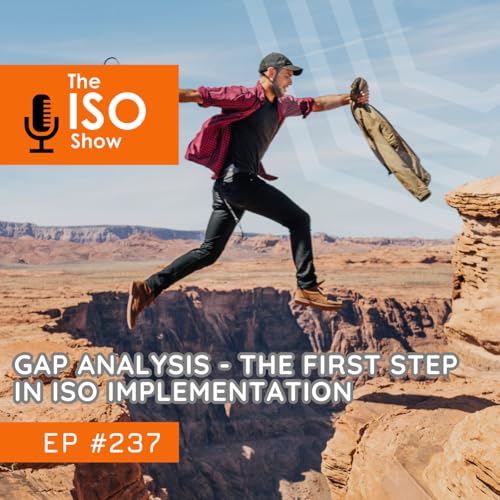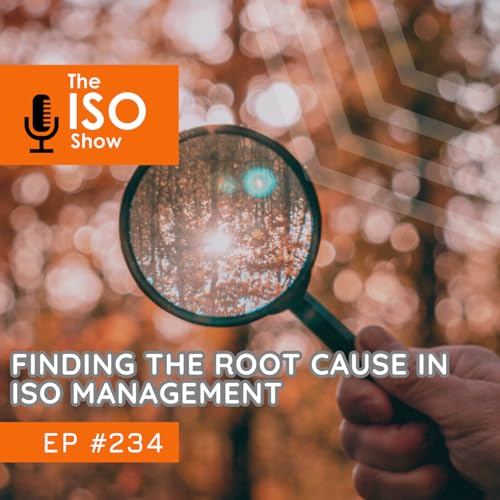When embarking on your ISO journey, a crucial first step is evaluating your current level of compliance and identifying what gaps need to be filled to gain certification or fully align with a Standard. This is typically done by conducting a Gap Analysis. This exercise sets the foundations for your ISO Implementation project, from setting key actions and objectives, to resourcing and establishing a project timeline. In this episode, Ian Battersby dives into the purpose of a Gap Analysis, who should be involved in the exercise and what inputs and outputs you should expect to have from conducting a Gap Analysis. You'll learn · What is a Gap Analysis? · What is the aim of a Gap Analysis? · What is the process of conducting a Gap Analysis? · Who should be involved in a Gap Analysis? · What inputs should be included in a Gap Analysis? · What outputs can you expect from a Gap Analysis? Resources · Isologyhub In this episode, we talk about: [02:05] Episode Summary – Ian Battersby dives into the first step on any ISO Implementation journey, breaking down what a Gap Analysis is, it's purpose and what you should expect to get out of conducting one. [02:50] What is a Gap Analysis?: Simply put, it's the start of the process. It's a key to understanding where an organisation is right now and establishing what it needs to do on its journey to ISO certification. But it's not just for certification, as certification isn't always what people are trying to achieve. Many businesses opt to align themselves to a standard to ensure they're doing the right thing, but may not go through with full certification. [04:05] Who is the aim of a Gap Analysis? The objective of a Gap Analysis is to carry out a review of your organisation against the requirements of the respective standard. This will help to establish the following: · Areas where you conform to the standard, where you may have established the required processes, procedures, roles, responsibilities, systems, methods, documents · Areas of nonconformity, where such things will need to be developed · You may partly conform, so it's important to understand that as well From that understanding, you can build key actions, timescales and responsibilities for implementing an ISO Standard. It's also very useful to leadership; to clarify what's needed, to look at priorities, to resource what's required and to establish a timeline to your end goal. [06:25] What is the process of conducting a Gap Analysis? It's important to do this in a very structured manner. It's also important to get access to existing documentation and personnel in key roles; they'll be helpful during the gap analysis in providing understanding. You'll need to evaluate your current level of compliance against the following clauses within your desired ISO Standard(s): 4 Context: Understanding the world in which you operate, the people and organisations which are important to you. This is where you will determine the scope of your system (what to include, what parts of the standard are relevant). 5 Leadership: Top management's commitment, how involved they are, their accountability and their commitment to resourcing, promoting, to giving people authority through clear roles and responsibilities. 6 Planning: This is about assessing risks and opportunities; understanding the uncertainty caused by your operating environment (context). It also involves setting objectives and then establishing meaningful plans to address the risks/opportunities and objectives; mitigations; establishing controls; operational processes. 7 Support: This is where you look at people, competence Infrastructure and environment (are your facilities/equipment appropriate to what you need to do). You will also need to identify what you need to monitor and measure to demonstrate the effectiveness of your ISO Management System. Next, you need to cover awareness and communication, i.e. how do you make people aware of your system, policy, processes; what do you tell other interested parties? Lastly, ensure you address how you control the documentation which supports your system. 8 Operation: This address the delivery of a product or service to the customer, including all the processes for doing so. For example, in ISO 9001 this clause defines what's required when designing, developing, controlling externally provided products/services and controlling anything which goes wrong. This is typically the clause that contains the largest difference between ISO Standard, with each one focusing requirements on it's topic focus. For example, ISO 14001 includes requirements for emergency preparedness and response in the event of an environmental incident. 9 Performance evaluation: This is where you review and report on the results of the monitoring and measurement that you've put in place. For those ...
Más
Menos
 38 m
38 m 44 m
44 m 26 m
26 m Oct 30 202537 m
Oct 30 202537 m Oct 15 202525 m
Oct 15 202525 m Oct 8 202535 m
Oct 8 202535 m Sep 24 202531 m
Sep 24 202531 m 30 m
30 m
